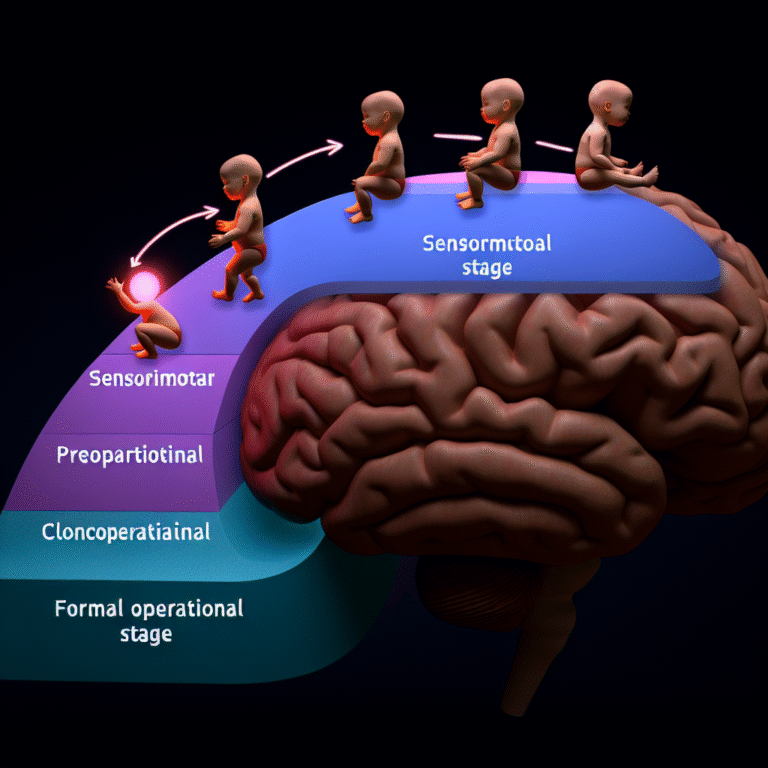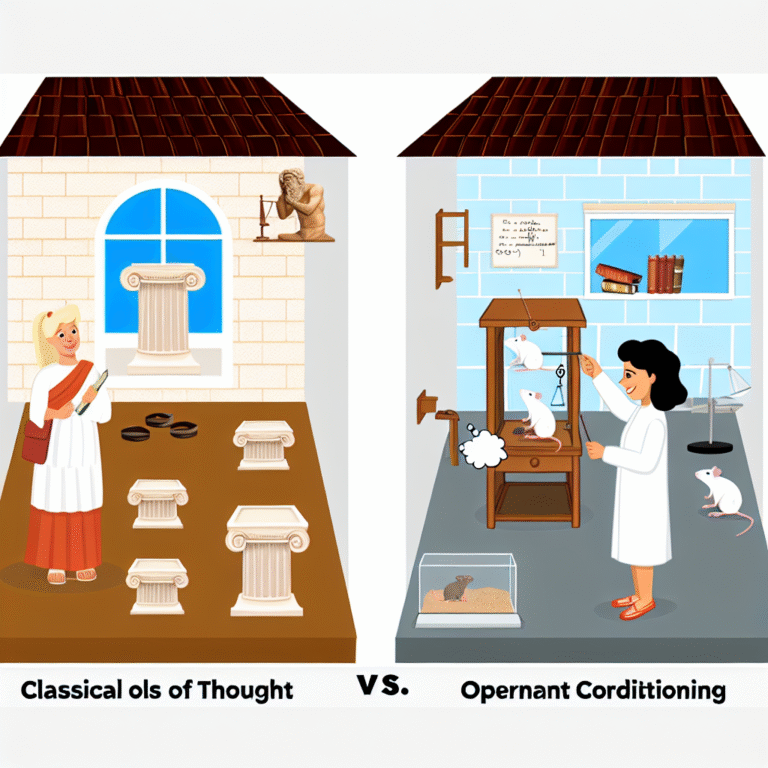
From Childhood to Connection: How Attachment Theory Shapes Adult Relationships
Introduction
Imagine a world where every adult relationship is rooted in understanding and empathy. A world where connections are deep, sustained, and fulfilling. This vision may seem lofty, but the journey begins in childhood. From Childhood to Connection: How Attachment Theory Shapes Adult Relationships provides critical insights into how our earliest bonds influence the relationships we form later in life. As adults, our ability to connect, love, and communicate hinges on the attachment styles established through our interactions during our formative years. Understanding this continuous thread can significantly enhance our emotional intelligence, empower personal growth, and cultivate healthier, more supportive relationships.
The Foundation of Attachment Theory
What is Attachment Theory?
Attachment theory, developed by psychologists John Bowlby and Mary Ainsworth, explores the dynamics of long-term relationships between humans, particularly focusing on the emotional bonds formed in childhood. Bowlby posited that the bond between a child and their primary caregiver serves as an internal working model for future relationships. Ainsworth expanded on this with the "Strange Situation" assessment, identifying three primary attachment styles: secure, anxious, and avoidant.
The Four Types of Attachment Styles
Secure Attachment: Children with secure attachments feel safe and valued. They tend to seek help when needed and develop more satisfying relationships in adulthood.
Anxious Attachment: Those with anxious attachments often worry about their partner’s love for them. They may become clingy and overly dependent on others for validation.
Avoidant Attachment: Avoidantly attached individuals may distance themselves emotionally. They often have trouble opening up and may prioritize autonomy over intimacy.
- Disorganized Attachment: This less common style stems from inconsistent behavior from caregivers, leading to confusion and fear in relationships. Adults with this attachment style struggle significantly with trust and emotional regulation.
Case Study Analysis: Transforming Attachment Styles
Let’s consider the case of Sarah and Mike. Sarah, who grew up in a nurturing environment, exhibits a secure attachment style. Mike, however, had a tumultuous upbringing marked by inconsistency in parenting, leading him to develop an anxious attachment style. Their relationship showcases the contrast:
Sarah’s Approach: She communicates openly with Mike, encouraging him to express his concerns. Her secure base allows Mike to feel safer, fostering trust.
- Mike’s Challenge: Despite his anxiety, Sarah’s stability helps him confront his insecurities, gradually allowing him to adapt and develop healthier relational habits.
Sarah’s and Mike’s relationship exemplifies how understanding attachment theory can facilitate healing and growth, bridging the gap from childhood to connection.
The Evolution of Relationships
How Childhood Experiences Influence Adult Attachments
Research indicates that the quality of childhood attachments significantly predicts adult relational patterns. For instance, a study by Fraley (2002) established that individuals with secure attachments in childhood are more likely to form stable, satisfying adult relationships, while those with insecure attachments experience greater difficulties and conflict.
Impact on Romantic Relationships
Romantic relationships serve as a primary domain where our childhood attachments manifest. Secure individuals often approach romantic partners with trust and openness, resulting in more profound emotional intimacy. Conversely, anxiously attached individuals may engage in cycles of reassurance-seeking and fear of abandonment, while avoidantly attached ones might inadvertently create emotional distance.
Table 1: Attachment Styles and Relationship Dynamics
| Attachment Style | Characteristics in Relationships | Potential Challenges |
|---|---|---|
| Secure | Trusting, open communication | Generally lower risk of conflict |
| Anxious | Seek reassurance, high sensitivity to partner’s feelings | Fear of abandonment, clinginess |
| Avoidant | Value independence, struggle with emotional intimacy | Emotional distance, misunderstandings |
| Disorganized | Erratic behaviors, difficulty trusting | Cycle of fear and dependence |
Case Study Analysis: Lindsay and Tom
Lindsay, a securely attached individual, meets Tom, who displays avoidant tendencies. Their differing approaches to love create a learning moment:
Lindsay’s Strategy: By maintaining open dialogue and respecting Tom’s need for space, Lindsay helps him gradually bring down his walls.
- Tom’s Growth: Through patience, Tom learns to accept love without feeling overwhelmed, demonstrating that with mutual effort, attachments can evolve positively.
From this case study, it becomes evident that despite initial hurdles, understanding attachment theory can guide couples toward better understanding and connection.
Understanding Emotional Intelligence through Attachment
The Role of Emotional Intelligence (EI)
Emotional intelligence is intricately linked to our attachment styles. Securely attached individuals generally exhibit higher emotional intelligence, enabling them to navigate social situations with ease. This reflects both in their self-awareness and their ability to empathize with others.
Enhancing EI through Awareness
Being aware of your attachment style can enhance your emotional intelligence. Recognizing how you react to others’ emotions provides vital learning opportunities for personal development. For individuals who realize they possess an insecure attachment style, actively seeking to understand and modify their behaviors can lead to improved relational outcomes.
Case Study Analysis: Jamie’s Transformation
Jamie, who recognized her anxious attachment style, took steps to enhance her emotional intelligence by:
Seeking Therapy: Therapy helped Jamie understand her triggers and maladaptive behaviors, leading to healthier coping mechanisms.
- Communicating Needs: In her new relationship, she started expressing her needs more clearly, which led to more honest dialogues with her partner.
Through Jamie’s journey, we see the power of combining emotional intelligence with attachment theory to pave the way from childhood to connection.
Strategies for Improving Relationships
Building Secure Attachments
Creating secure attachments in adult relationships involves conscious effort. Here are a few strategies:
Open Communication: Prioritizing honesty fosters trust. Sharing fears and insecurities can encourage vulnerability.
Active Listening: Show genuine interest in a partner’s thoughts and feelings by practicing reflective listening.
- Consistent Support: Being there for your partner in times of need reinforces attachment security.
Navigating Anxious and Avoidant Attachments
For those with anxious or avoidant styles, specific strategies can facilitate healthier interactions:
For Anxious Individuals: Practice self-soothing techniques to manage fears of abandonment. Engage in hobbies or friendships that cultivate independence.
- For Avoidant Individuals: Gradually increase vulnerability by sharing small, manageable secrets with your partner – this builds comfort.
Case Study Analysis: Ethan and Rachel
Ethan, who has an anxious attachment style, partners with Rachel, who identifies as avoidant. They navigate their relationship through:
Communication: By using “I” statements, Ethan addresses his feelings without laying blame, alleviating some of his attachment anxiety.
- Compromise: Rachel learns to be more openly affectionate, which helps her partner feel secure without feeling overwhelmed.
The case of Ethan and Rachel underscores the importance of adaptability and teamwork in transforming attachment styles from childhood to connection.
Conclusion: The Path Forward
Understanding the link from childhood to connection offers invaluable insights into the dynamics of adult relationships. By recognizing our own attachment styles and the influences of our formative years, we gain the tools needed to foster healthier interactions, greater emotional intelligence, and deeper connections.
The journey toward healthier relationships may require patience and effort, but as we embrace the lessons of attachment theory, we can transform our connection with self and others. Inspire growth by sharing this knowledge; remember, each attachment carries the potential for healing and transformation.
FAQs
1. How can I identify my attachment style?
To identify your attachment style, consider reflecting on your relationship patterns and emotional responses toward partners. Take assessments available online, or consult a psychologist to gain deeper insights.
2. Can attachment styles change over time?
Yes, attachment styles can change through self-awareness, therapy, and positive relationship experiences. Engaging with secure partners can also foster growth toward a more secure attachment style.
3. What if my partner has a different attachment style?
Different attachment styles can complement one another if both partners are willing to communicate openly and understand each other’s triggers. Establishing routines that foster emotional connection can help bridge gaps.
4. How does understanding attachment theory benefit my relationships?
Understanding attachment theory enriches emotional intelligence, enhances communication skills, and fosters empathy, all of which create a stronger foundation for healthy, meaningful relationships.
5. Is it possible to build a secure attachment in a previously insecure relationship?
Absolutely! With commitment from both partners, establishing trust, practicing open communication, and seeking support strategies can progressively transform an insecure relationship into a secure one.
By embracing attachment theory, we can build bridges from childhood to connection, forging relationships that not only quench our inherent desire for love but also promote emotional growth and resilience.
















